Last Updated: 09/12/2025
Chicken Behaviour Explained: What your flock is telling you
Ever wondered why chickens peck, crow, or take dust baths? Our vet guide deciphers the fascinating world of chicken behaviour. Learn about the pecking order, roosting, nesting, broodiness, and what all their different clucks and cackles mean to better understand and care for your flock.
Author: Dr Nicole Wynne BSc BVMS MANZCVS (Unusual Pets)
Reading Time: 12 minutes - short read
If you've ever watched a flock, you know chickens have a whole range of behaviours, from obvious squabbles to subtle head tilts. As highly social animals, they use this 'language' to communicate with each other and even with you! Their actions give us a glimpse into their world, telling us if they're feeling happy, angry, or broody. Read on for our guide to deciphering the wonderful world of chickens.
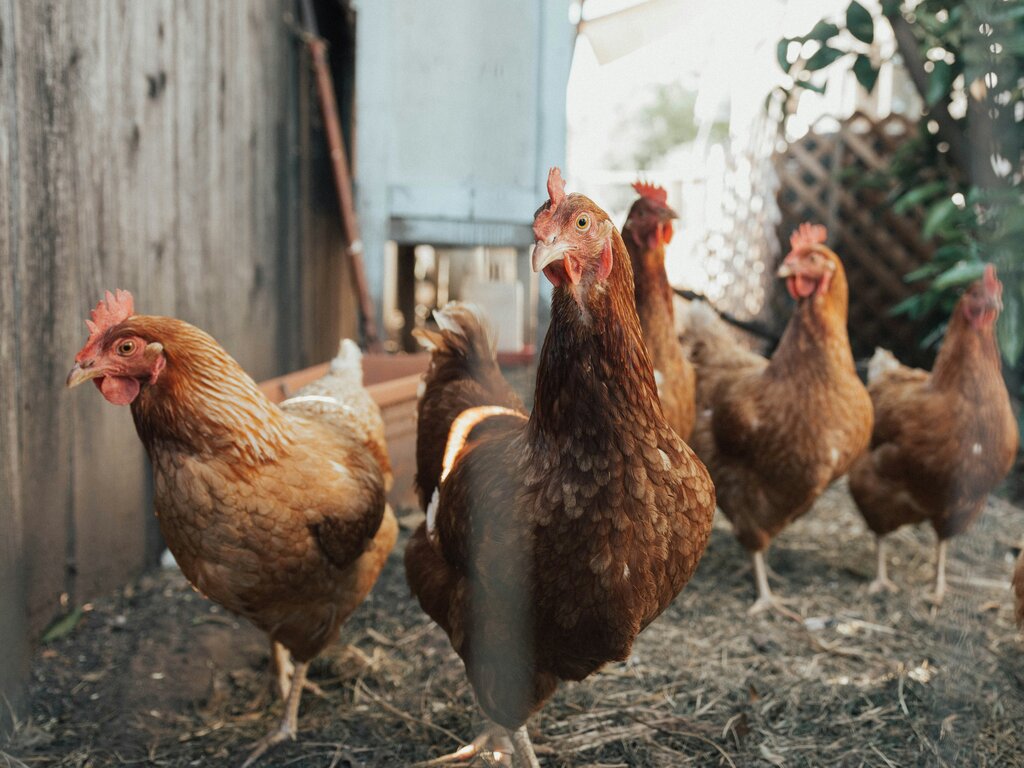
We all know about the pecking order, but there's actually a lot to it! Chickens are able to recognise about 30 individuals, and primarily use individual head and neck characteristics to identify their group members. Chickens higher in the pecking order tend to harass chickens lower in the pecking order, and will often snag the best food, shade, and perches.
A group of chickens with a stable pecking order tend to be peaceful, with arguments breaking out when new chickens are added, or when existing chickens develop illnesses or become older.
Read more about common health conditions and preventative care in our Guide to Chicken Health.
Chickens maintain their place in the social hierarchy using several behaviours:
Pecking
Pecking is a common behaviour that can be used to warn lower-ranking chickens away from desirable resources. In an established flock, the higher-ranking chicken may not even have to resort to pecking.
Raising the neck feathers
Another aggressive behaviour is the raising of the neck feathers, which often are used to instigate a fight. If one chicken doesn't back down after this behaviour, it is likely to escalate into squawking and jumping at each other.
Fighting and Squabbling
Although fighting and squabbling can look alarming, it is important to allow chickens to perform these behaviours, as that is how they figure out the pecking order. Once they've figured it out, group dynamics often remain stable, but the occasional little disagreement over dust bath spots, coveted nest boxes, or treat might still happen.
What to do:
- Allow chickens to perform these behaviours, to establish their pecking order
- If these behaviours are relentless and cause injury, and/or occur in an established flock, separate the injured bird immediately and address the potential causes such as stress, boredom, overcrowding, illness or nutritional deficiencies.
- Learn How to Start Keeping Chickens, and how to optimally Feed Your Chickens to prevent nutritional deficiencies.
Roosting and perching
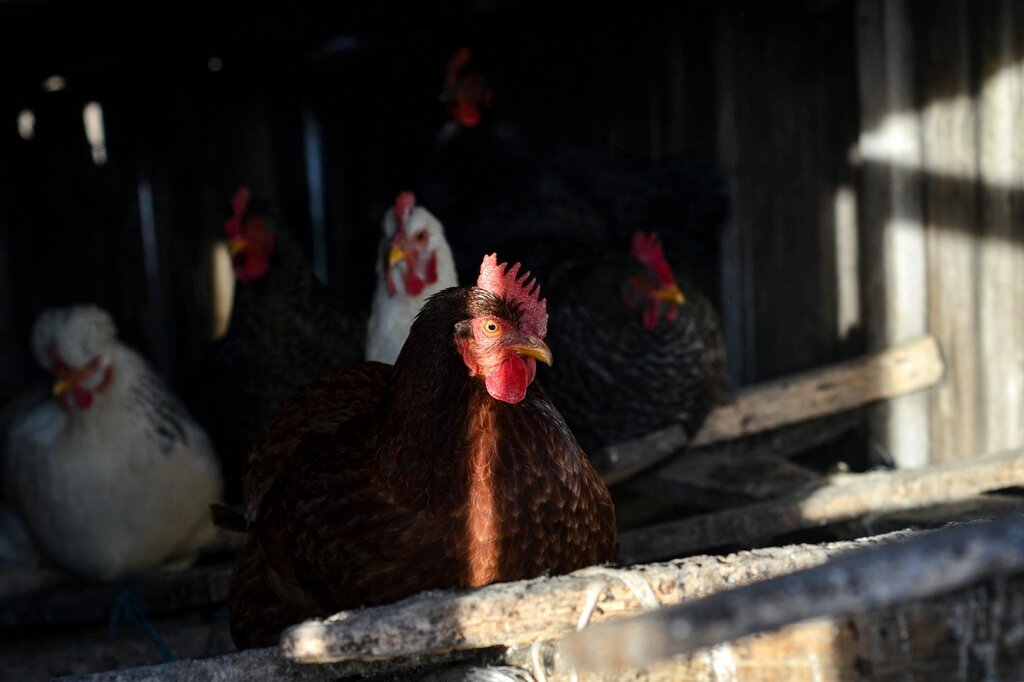
The drive to roost and perch above the ground is an instinctual behaviour in chickens, arising from their evolutionary past of having to avoid ground-based predators at night, when chickens are unable to see. Chickens will seek roosting spots above the ground once daylight starts to wane.
What to do:
- Have more roosting spots or perches than the number of chickens to make sure that everyone gets to perch.
- Allow chickens access to their perches during the daylight hours, as lower ranking members of the flock may use them to avoid a higher ranking chicken.
- Learn more about appropriate perches and other chicken supplies in our Backyard Chicken Guide.
Preening and dust bathing
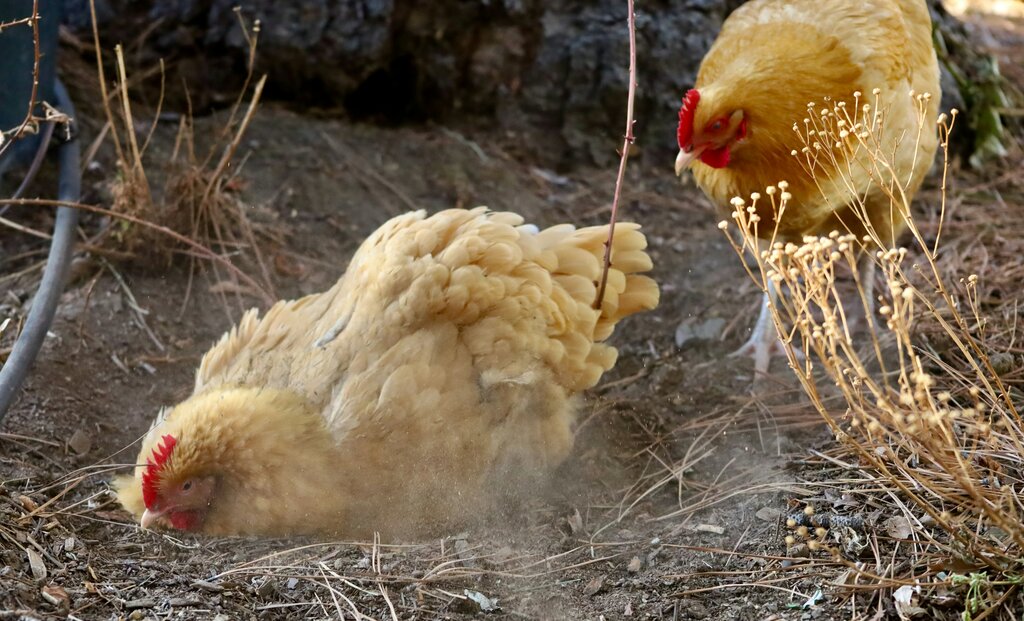
Chickens preen by using their beaks to realign the vanes of their feathers, and they also collect oil from the uropygial gland on their tails to spread over their feathers. They may also shake out their feathers before and after preening to realign the shafts, particularly after they've been picked up. They will also use their feet and nails to scratch.
Dust bathing
Dust bathing is another method of feather maintenance, where a chicken will nestle into a sandy spot, then ruffle the feathers while continuing to wriggle into the dust. They may repeat this behaviour a few times, then stand up and continue their preening session after a big ruffle to shake out excess dust and sand from their feathers.
Pecking
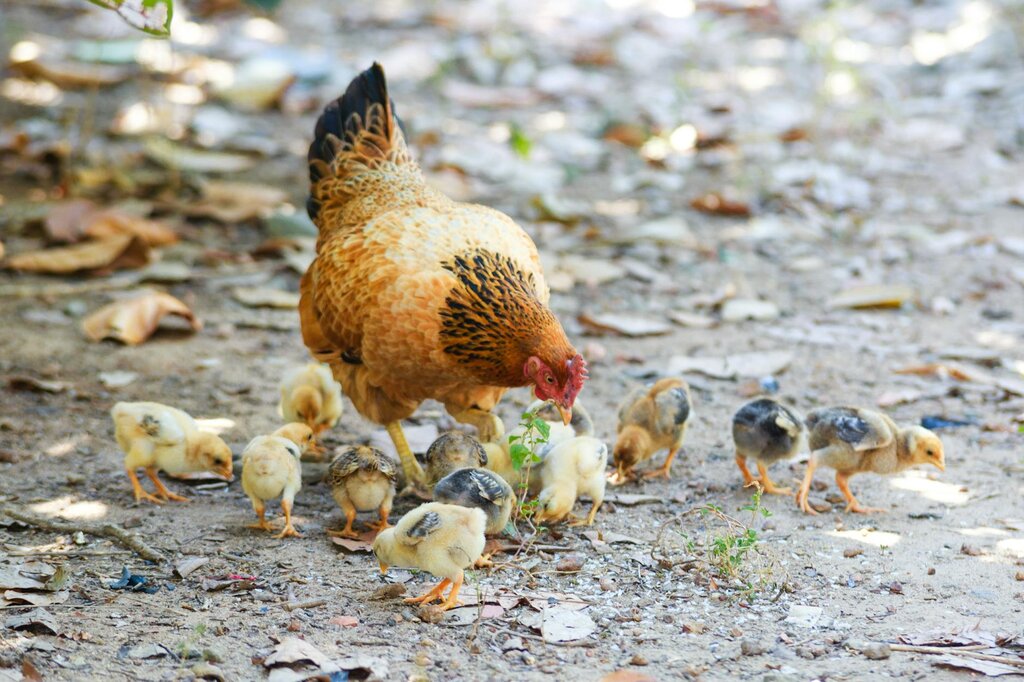
While chickens can peck each other aggressively, pecking is also used for feeding and investigating, and usually, investigating if something can be eaten! The beaks of chickens are very sensitive, and they can determine if a small object is edible or not by pecking and manipulating it with their beaks. They will also peck at unknown objects to investigate them.
Chickens instinctively know how to peck to investigate their environment, but they have to learn what is and isn't edible via trial and error, as well as the hen showing her chicks what to look out for.
Pecking is usually combined with head bobbing to allow the chicken to look at the object from different angles.
What to do:
- To get a good look at their investigative pecking behaviour, throw in a vegetable or fruit that they haven't had before, and see their little chicken brains work it out!
- Providing novel food items is also a great way of providing environmental enrichment. As omnivores, chickens are constantly evaluating their environment for edible objects.
- Check out our Guide to Chicken Enrichment for more tips and ideas!
Nesting and Laying Behaviours
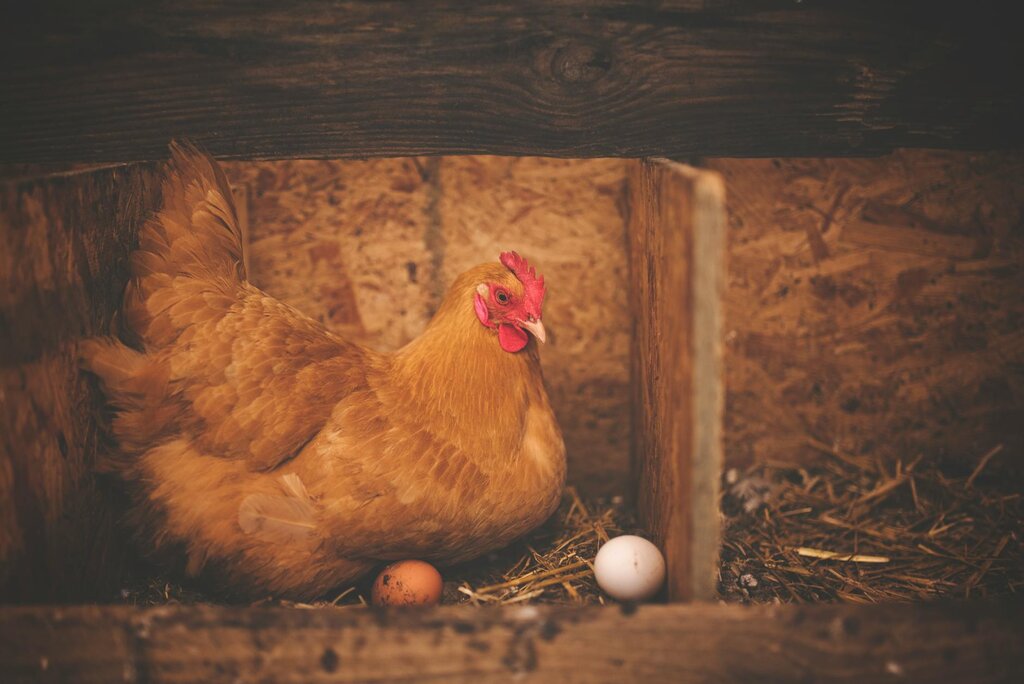
Hens have a specific egg laying routine that they go through before laying each egg, but egg laying and nesting behaviour can differ greatly from breed to breed, with purpose-bred egg layers like ISA Browns having a very short and simple pre-laying routine, and broodier breeds like Silkies having a more complicated and longer pre-laying routine.
The first step of laying is often the hen seeking out a place to lay by making pre-laying calls, investigating her environment, and picking out which nest box she would like to lay in. Once she picks a nest box she likes, she will enter it and circle a few times, as well as sit down and get up until she is ready to lay. Most hens will lay from a crouching position.
Once she's laid the egg, she will stand up, inspect the egg, then cackle while she leaves it to join the rest of the flock.
Learn more about Chicken Breeds, and find out which one is the right fit for you.
Broody Hens
Broodiness is a specific nesting and laying behaviour that occurs once a hen has laid her full clutch of eggs and is ready to incubate them until they hatch. Many breeds that are bred for prolific egg laying are less broody.
A trigger for broodiness can be increased daylight, as well as multiple eggs in nest boxes.
A broody hen will sit on the eggs and fluff up until she looks like a ball of feathers, and she may fuss with the eggs, turning them and rearranging them. Broody hens also become very protective of their eggs, and will attempt to peck and attack anyone that comes near them. They will also prioritise incubating the eggs above all else, and some hens will do this to the point where they start to lose weight.
What to do:
- As broodiness is often an unwanted behaviour, especially if a hen is sitting on unfertilised eggs, it is important to collect eggs daily.
Crowing
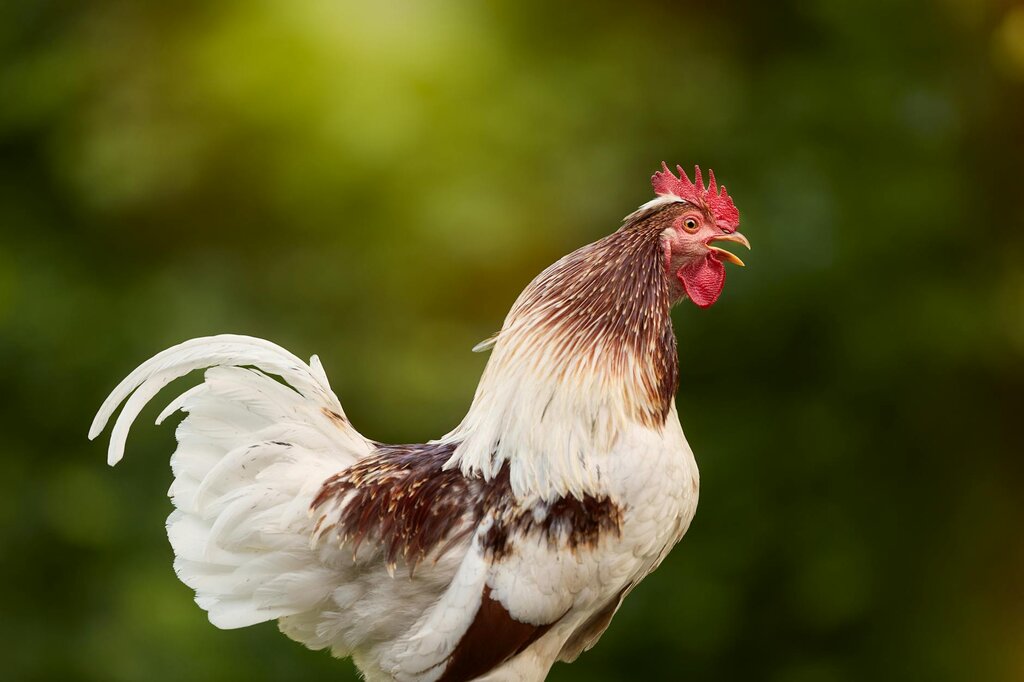
We all think about roosters when we hear crowing, and roosters will crow to establish the boundaries of their territory, and work out which roosters within crowing distance are stronger or weaker than them. However, hens can crow too, and it is usually the dominant hen that crows.
What to do:
- Most urban councils prohibit the keeping of roosters, so stick with hens in these cases.
- A crowing hen can certainly be a nuisance, especially in metropolitan areas. A reshuffling of the hierarchy can be achieved by separating her from the flock for a few days, or introducing new chickens.
- Crowing in hens combined with the development of other rooster features like spurs might be an indication of a hormonal disorder, so seek the advice of an Avian veterinarian.
Vocalising
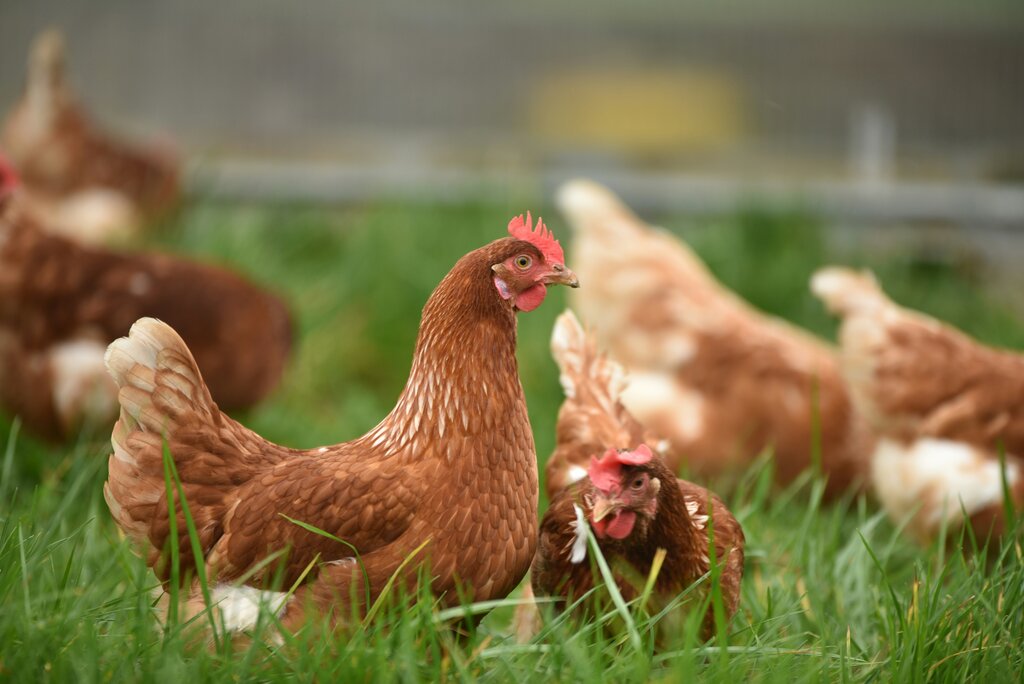
Chickens make all sorts of funny noises, including deep clucks, curious higher pitched sounds, loud caws, and irritated cackles. The meanings of different types of noises can differ from individual to individual, and some breeds are more likely to make some noises than others. However, you'll pick up the gist of what they're saying just by watching your chickens interact with each other.
Deep clucks
This is the classic, everyday chicken sound. A low, gentle, and often repetitive clucking is a sign of contentment and communication.
- Meaning: "All is well," "I'm here," or "Look what I've found."
- Context: You'll hear this sound most often when your chickens are happily foraging, scratching in the garden, or dust bathing. A mother hen also uses a series of soft clucks to talk to her chicks and keep them close by. Think of it as the happy background chatter of a relaxed flock.
Higher-pitched sounds
Higher-pitched sounds usually signal excitement, curiosity, or a mild alert. The specific meaning often depends on the repetition and urgency of the sound.
- Meaning: "Ooh, a treat!" or "What's that?"
- Context: You'll often hear a series of excited, high-pitched clucks when a chicken finds a particularly delicious snack, like a worm or a snail. This is often referred to as the "food call," and it alerts the rest of the flock to the discovery. A single, questioning high-pitched sound might be made when a chicken sees something new or unfamiliar in its environment.
Loud caws
A loud, sharp, and urgent caw is an alarm call. This is not a sound to be ignored, as it signals a direct and immediate threat.
- Meaning: "Danger from above!"
- Context: Chickens have a specific alarm call for aerial predators like hawks, eagles, or crows. This loud caw is designed to make the entire flock instantly freeze in place or run for the nearest cover. It’s a distinct, piercing sound that conveys a serious warning.
Cackles
The loud, rhythmic, and repetitive cackle is famously known as the "egg song."
- Meaning: "I've just laid an egg!"
- Context: A hen will make this triumphant announcement immediately after laying an egg. Often, other hens in the flock will join in, creating a chorus of cackles. While it sounds like boasting, it's also believed to be a clever tactic to distract potential predators. By moving away from the nest and making a lot of noise, the hen draws attention to herself and away from her vulnerable, freshly laid egg.
FAQs
Understanding the 'why' behind your chickens' behaviour is one of the most rewarding parts of keeping a flock. The more you watch, the more you'll learn to interpret their chatter, understand their social dynamics, and appreciate their individual personalities. A happy flock is an understood flock, so enjoy getting to know your feathered family.
Articles recommended for you
Our vet authored guide to the benefits of feeding your dog fresh food plus tips and advice for introducing it into their regular menu.
See our guide to protecting your pet from parasites from our vet team.
Thinking of getting a fish? Check out our guide for setting up a tank and home care tips!
Looking to understand horse feeds better? This comprehensive guide covers feeding recommendations for horses of all ages and disciplines.
Does your pet suffer from anxiety? Check out our Vet-guide for treatment options to help your pet.
History
Our experts continually monitor the health and wellness space and we update our articles when new information becomes available.
Wed 10 Sep 2025
Edited by Dr Gillian Hill BVSc (Hons)Dr Nicole Wynne BSc BVMS MANZCVS (Unusual Pets)
Veterinarian, MANZCVS (Unusual Pets)
Dr. Nicole graduated from Murdoch University in WA in 2014, and immediately started working in exotics-only practice. She was also one of the few vets in Australia that would routinely see venomous snakes ranging from death adders to tiger snakes. Although Dr. Nicole enjoys seeing all exotic pets, her absolute favourite are rabbits. She passed her Australian and New Zealand College of Veterinary Scientists Membership (MANZCVS) exam in unusual and exotic pets in 2021.


Social hierarchy